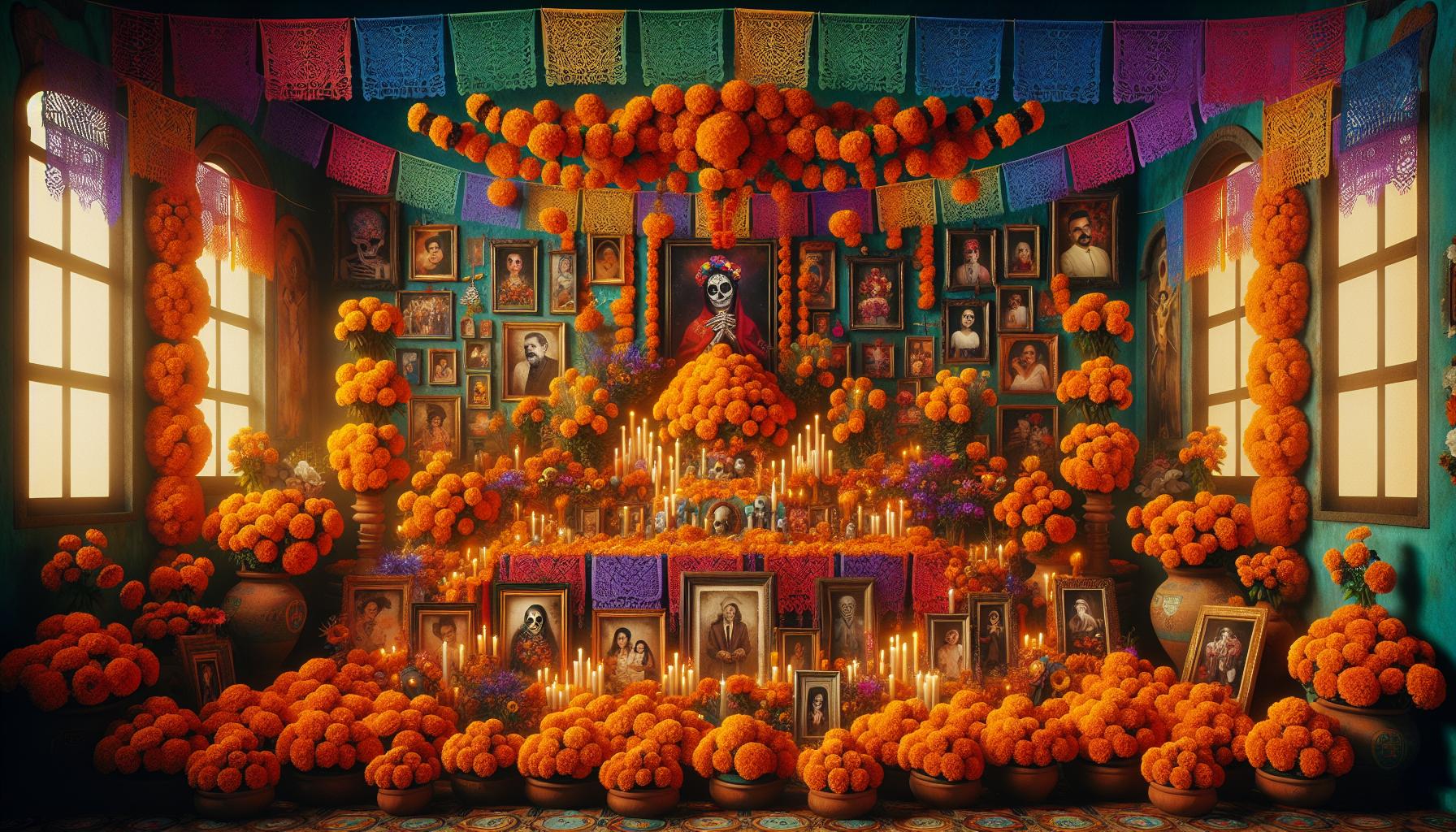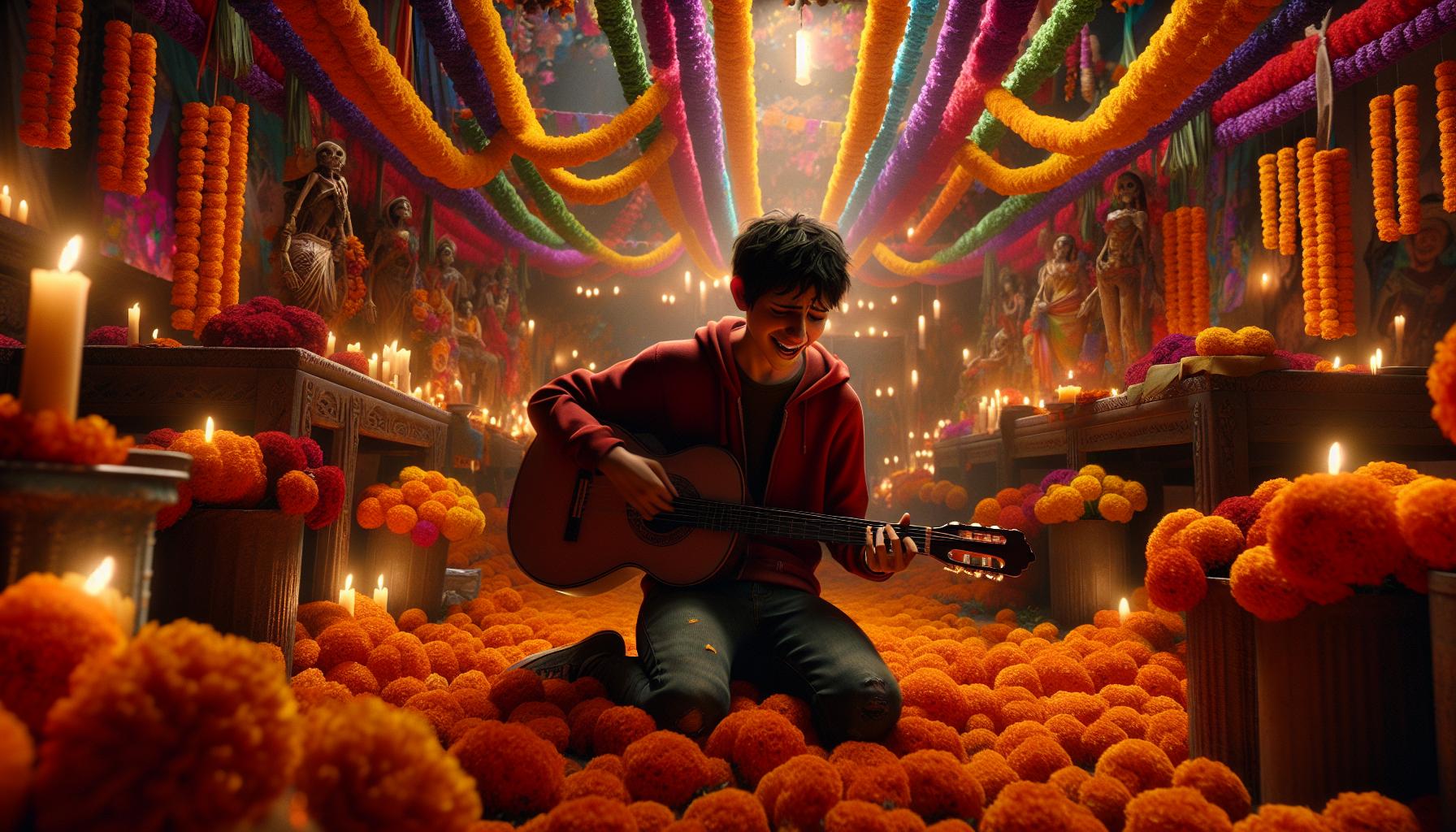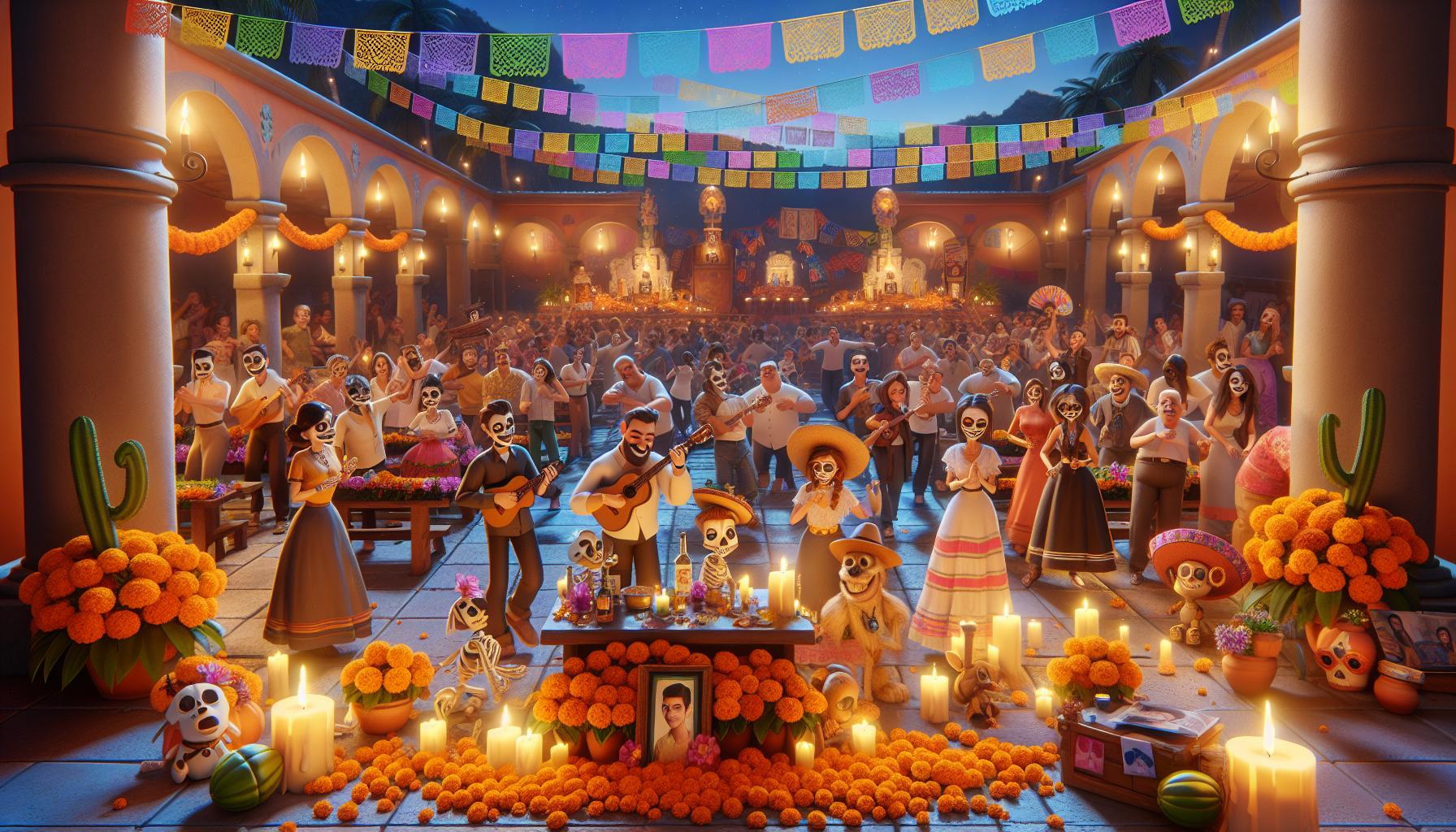Key Takeaways
- Cultural Celebration: Coco beautifully highlights the significance of the Day of the Dead (Día de los Muertos), illustrating how celebrating ancestral memories enriches familial bonds.
- Themes of Family and Memory: The film emphasizes the importance of family heritage and collective memory, showcasing how these concepts shape identity and connection across generations.
- Character Development: Miguel’s journey reflects the struggle between personal dreams and family traditions, while characters like Hector and Abuelita deepen the narrative with their roles in illustrating love and legacy.
- Visual and Musical Integration: Stunning animation and a captivating soundtrack enhance the storytelling, using traditional Mexican elements to create an emotional and immersive experience.
- Cultural Representation: Coco serves as a powerful representation of Mexican culture, educating audiences about its values and traditions while celebrating the joy found in remembering loved ones.
In a vibrant celebration of culture and family, Disney-Pixar’s Coco captures the essence of the Day of the Dead while exploring themes of memory and legacy. The film’s rich storytelling and stunning visuals invite viewers into a world where music and tradition intertwine, making it a cinematic masterpiece that resonates across generations.
As Miguel embarks on a journey through the Land of the Dead, he uncovers the importance of honoring one’s ancestors and the power of following one’s dreams. This analysis delves into the film’s intricate layers, examining how it portrays the significance of familial bonds, the role of music, and the celebration of life and death. Through its heartfelt narrative, Coco not only entertains but also educates audiences about the beauty of Mexican culture and the universal experience of remembering those who came before us.
Coco Movie Analysis
Coco stands out as a vibrant celebration of the Day of the Dead, also known as Día de los Muertos. This Disney-Pixar film intricately weaves together rich storytelling with stunning visuals, creating a unique cinematic experience that resonates with audiences of all ages. The narrative centers around Miguel, a young boy who embarks on a journey in the Land of the Dead. Throughout his adventure, Miguel discovers the significance of honoring his ancestors and the importance of pursuing his dreams.
The film portrays familial bonds compellingly, highlighting how relationships traverse both life and death. Music plays a crucial role in Coco, serving as a vehicle for expressing emotion and connecting characters across generations. Each musical element reinforces the narrative’s themes, enhancing the viewers’ understanding of the Mexican culture represented in the film.
The celebration of life and death is pivotal in Coco, showcasing the idea that remembering loved ones cultivates a sense of community. The film entertains while educating viewers about the rich traditions of Mexican culture, emphasizing the universal act of remembrance and the enduring connections between family members, alive or departed.
Themes and Messages

Coco explores profound themes, notably family, heritage, and the significance of memory. These elements weave together to form a narrative that resonates deeply with viewers.
Family and Heritage
Family serves as the heartbeat of Coco. The film illustrates the strong ties that bind generations, emphasizing love, support, and sacrifice. Miguel’s journey highlights how understanding one’s roots shapes identity and personal growth. The portrayal of familial relationships underscores the importance of honoring ancestors, revealing that heritage is not merely a background but a vital part of one’s self-concept. The Dia de los Muertos celebration exemplifies this connection, symbolizing how families remember and celebrate their loved ones. By embracing both past and present, Coco encourages viewers to recognize the strength found in family bonds.
The Importance of Memory
Memory plays a critical role in Coco, acting as a bridge between the living and the deceased. The film suggests that remembering loved ones ensures their legacy endures, bringing comfort and continuity. Through music and storytelling, characters communicate their experiences, reinforcing the idea that memories unite families across generations. This theme is crucial as it showcases how collective remembrance fosters connection and understanding. Coco asserts that life is enriched through the recollection of shared experiences, making memory a powerful tool for preserving both individual and collective identities.
Characters and Development

Coco features a diverse cast of characters, each contributing to the film’s exploration of themes like family, memory, and identity. The development of these characters drives the narrative while highlighting cultural significance.
Miguel
Miguel is a passionate young boy with dreams of becoming a musician, despite his family’s disapproval of music. His character development centers on the struggle between pursuing personal ambition and honoring family traditions. As he journeys through the Land of the Dead, Miguel learns the value of his heritage and the importance of familial connections, ultimately discovering that dreams flourish when nurtured by love and remembrance.
Hector
Hector serves as a guiding figure for Miguel in the Land of the Dead. Initially portrayed as a mischievous trickster, his character unveils layers of depth through his backstory. Hector’s desire to be remembered highlights the film’s theme of legacy. His bond with Miguel symbolizes the significance of storytelling as a means to bridge generational gaps. Ultimately, he embodies the notion that true connections transcend both life and death, teaching Miguel the importance of remembering one’s ancestors.
Abuelita
Abuelita, Miguel’s grandmother, represents the embodiment of family values and tradition. Her strict stance on music contrasts sharply with Miguel’s aspirations. This characterization evolves throughout the film, revealing her deep love for family and her hidden passions. Abuelita’s nurturing presence reinforces the film’s message about the strength of familial bonds. Through her character, Coco illustrates how love and understanding can reconcile generational differences, fostering unity among family members despite differing views.
Visual and Musical Elements

Coco’s visual and musical elements enhance its cultural storytelling, immersing audiences in a vibrant world that celebrates life and death. The combination of striking animation techniques and a powerful soundtrack creates an emotional resonance that underpins the film’s central themes.
Animation Style
Coco showcases a unique animation style that captures the essence of Mexican culture. The use of bright colors and intricate designs reflects the festive spirit of the Day of the Dead. Character designs, inspired by traditional Mexican art and folklore, contribute to the film’s cultural authenticity. The animation fluidly transitions between the living world and the Land of the Dead, employing visual contrasts that emphasize the differences between the two realms. Each scene utilizes visual symbolism, such as the intricate marigold petals representing the connection between the living and the deceased, reinforcing the film’s core themes.
Soundtrack and Score
Coco features a rich soundtrack and score that significantly enhance its narrative depth. Original songs, such as “Remember Me,” serve as emotional anchors in the story, articulating themes of memory and love. The score integrates traditional Mexican musical elements, such as mariachi and folk sounds, to create an authentic auditory experience. Instruments like the guitar and mariachi trumpets further immerse audiences in Mexican musical traditions. By blending dialogue and music seamlessly, the film emphasizes emotional moments, ensuring the music remains integral to character development and narrative progression.
Cultural Significance
Coco serves as a powerful depiction of Mexican culture, intertwining rich traditions and significant themes that resonate globally. The film’s cultural elements enhance its storytelling, making it an important piece of cinematic art.
Representation of Mexican Traditions
Coco accurately represents Mexican traditions, showcasing customs, values, and beliefs that underscore family and remembrance. The film emphasizes the importance of family gatherings and the role they play in cultural transmission. Traditional practices, such as the preparation of favorite foods for deceased loved ones, are highlighted, providing depth to the familial bonds depicted. The vibrant portrayal of cultural artifacts, including papel picado and altars, illustrates the significance of honoring ancestry. Miguel’s journey through the Land of the Dead celebrates these traditions, emphasizing their relevancy in maintaining connections across generations.
Día de los Muertos
Día de los Muertos is central to Coco’s narrative, illustrating themes of life and death through vibrant imagery and customs. The film presents this holiday not as a mournful occasion but as a joyful celebration of remembrance. Colorful decorations and shared stories create an atmosphere where the living honor the deceased. Coco highlights specific practices, such as creating ofrendas, where families showcase offerings to their ancestors, ensuring their spirits remain present. This depiction educates audiences about the cultural significance of the holiday, reinforcing the message that remembering loved ones allows their legacies to thrive beyond death. The portrayal of Día de los Muertos captures the richness of Mexican heritage, enhancing the film’s emotional impact and cultural authenticity.
Vibrant Testament
Coco stands as a vibrant testament to the power of family and memory. Through Miguel’s journey, the film beautifully illustrates how understanding one’s heritage fosters personal growth and identity. The rich visuals and heartfelt music not only enhance the storytelling but also immerse viewers in the cultural significance of Día de los Muertos.
This celebration of life and remembrance resonates deeply, reminding audiences of the enduring connections that transcend time and space. Coco’s ability to blend tradition with modern storytelling ensures its place as a beloved classic that educates while it entertains, leaving a lasting impact on all who experience it.